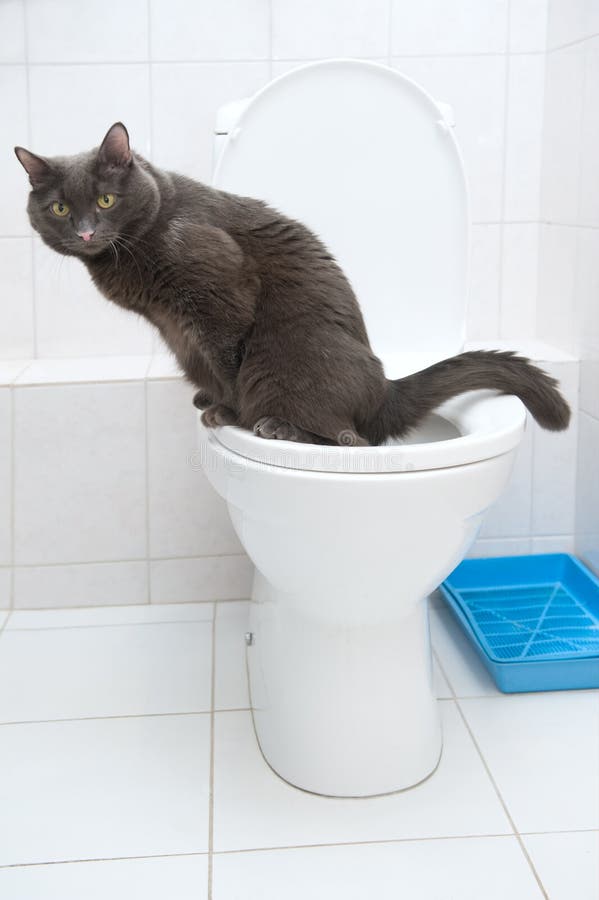An Relevance of Proper Disposal of Animal Waste
An Relevance of Proper Disposal of Animal Waste
Blog Article
Are you currently on the lookout for additional info involving Don't Flush Your Pets Poo Down The Loo, Vet Warns?

When it concerns throwing away waste, specifically animal waste, many individuals usually consider the hassle-free alternative of flushing it down the bathroom. Nevertheless, this seemingly easy remedy can have significant repercussions for the atmosphere and public health. In this article, we'll discover why flushing animal waste down the commode is a poor idea and give alternate methods for correct disposal.
Introduction
Proper garbage disposal is essential for keeping environmental sustainability and public health. While it might appear harmless to purge animal waste down the bathroom, it can bring about different concerns, both for the environment and human well-being.
Risks of flushing pet waste
Ecological effect
Purging animal waste introduces harmful germs and virus right into rivers, which can adversely impact water environments. These virus can contaminate water sources and damage aquatic life, interfering with fragile ecosystems.
Public health issues
Animal waste has harmful bacteria such as E. coli and Salmonella, which can position major health and wellness dangers to people. Flushing animal waste down the toilet can contaminate water supplies, bring about the spread of conditions and infections.
Alternatives to flushing
Instead of purging pet waste down the bathroom, there are a number of alternative disposal methods that are extra eco-friendly and hygienic.
Composting
Composting animal waste is a green method to deal with it. By composting, organic matter is broken down into nutrient-rich dirt, which can be used to feed gardens and plants.
Land fill disposal
Throwing away pet waste in a garbage dump is another option. While not as environmentally friendly as composting, it is a more secure click here choice to flushing, as it stops the contamination of water sources.
Animal waste disposal systems
There are customized pet garbage disposal systems available that securely and hygienically get rid of pet waste. These systems frequently make use of enzymes to break down waste and eliminate odors.
Actions to correct pet waste disposal
To make sure correct disposal of animal waste, follow these steps:
Scooping and getting waste
Routinely scoop and bag animal waste utilizing eco-friendly bags. This protects against waste from infecting the atmosphere.
Utilizing assigned waste bins
Dispose of bagged animal waste in designated waste bins, such as garden compost containers or land fill bins. Prevent flushing it down the toilet in all prices.
Cleaning litter boxes and animal locations on a regular basis
Routinely clean litter boxes and pet dog locations to prevent the build-up of waste and germs. Usage pet-safe cleaning items to preserve hygiene.
Advantages of proper disposal approaches
Adopting correct disposal methods for animal waste uses several benefits:
Lowered environmental pollution
Appropriate disposal approaches reduce the danger of environmental pollution, protecting waterways and ecological communities from contamination
Minimized danger of water contamination.
By preventing flushing pet waste down the toilet, the risk of water contamination is substantially lowered, safeguarding public health.
Improved sanitation and hygiene
Proper disposal methods promote far better cleanliness and health, developing a safer atmosphere for both humans and animals.
Final thought
Finally, purging pet waste down the toilet is harmful to the setting and public health. By adopting different disposal techniques and adhering to correct waste administration techniques, we can reduce the negative influence of pet waste and add to a cleaner, healthier planet.
What To Do With Dog Poo – The Do's And Don'ts Of Disposing Of Faeces
Dog poo bins
Some councils provide dedicated dog waste bins in popular dog-walking areas that can take dog poo that has been bagged but you can legally dispose of dog waste in any public litter bin, as long as it is securely bagged. This also applies to your wheelie bin at home.
Do not flush
Water companies do not recommend flushing dog faeces down the toilet because certain parasites can survive the water processing treatment and are potentially harmful to humans. You should also never consider flushing dog poo that has been bagged down the toilet as the bags will not break down and instead create severe blockages in the sewage system.
In the woods
The Forestry Commission promotes a ‘stick and flick’ method for dealing with waste in the woods. This means finding a stick and using it to flick any poo from off the path so that it is out of the way of other walkers. You could also bury it as long as it is not in an area where there might be livestock.
Livestock
Parasites found in dog poo can be transmitted to livestock if they inadvertently eat infected faeces that has been left on grazing land. This could result in the death of sheep or abortion in cattle so you should always make sure you pick up your dog’s waste in fields where livestock could be present.

Routinely clean litter boxes and pet dog locations to prevent the build-up of waste and germs. Usage pet-safe cleaning items to preserve hygiene.
Advantages of proper disposal approaches
Adopting correct disposal methods for animal waste uses several benefits:
Lowered environmental pollution
Appropriate disposal approaches reduce the danger of environmental pollution, protecting waterways and ecological communities from contamination
Minimized danger of water contamination.
By preventing flushing pet waste down the toilet, the risk of water contamination is substantially lowered, safeguarding public health.
Improved sanitation and hygiene
Proper disposal methods promote far better cleanliness and health, developing a safer atmosphere for both humans and animals.
Final thought
Finally, purging pet waste down the toilet is harmful to the setting and public health. By adopting different disposal techniques and adhering to correct waste administration techniques, we can reduce the negative influence of pet waste and add to a cleaner, healthier planet.
What To Do With Dog Poo – The Do's And Don'ts Of Disposing Of Faeces
Dog poo bins
Some councils provide dedicated dog waste bins in popular dog-walking areas that can take dog poo that has been bagged but you can legally dispose of dog waste in any public litter bin, as long as it is securely bagged. This also applies to your wheelie bin at home.
Do not flush
Water companies do not recommend flushing dog faeces down the toilet because certain parasites can survive the water processing treatment and are potentially harmful to humans. You should also never consider flushing dog poo that has been bagged down the toilet as the bags will not break down and instead create severe blockages in the sewage system.
In the woods
The Forestry Commission promotes a ‘stick and flick’ method for dealing with waste in the woods. This means finding a stick and using it to flick any poo from off the path so that it is out of the way of other walkers. You could also bury it as long as it is not in an area where there might be livestock.
Livestock
Parasites found in dog poo can be transmitted to livestock if they inadvertently eat infected faeces that has been left on grazing land. This could result in the death of sheep or abortion in cattle so you should always make sure you pick up your dog’s waste in fields where livestock could be present.

I was made aware of that write-up about 10 Things You Should Never Flush Down The Toilet through a good friend on another web address. Do you know about another person who is intrigued by the topic? Do not hesitate to share it. Thanks for taking the time to read it.
This Post Report this page